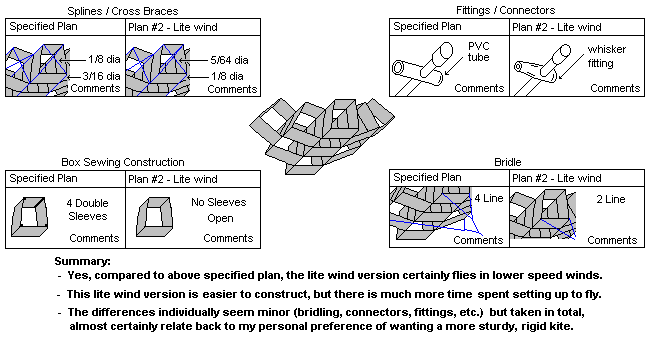

The narrower top panel and wider bottom panel to the box cells of this kite give it a graceful, floating appearance in the sky. The construction is easy, without all the loops, metal slip rings, line tensioners, etc. I would normally use.
Several years ago I came across a photo of this kite on the internet with the gif image having the name Allister. To give credit for this design, I use the name "Allister Box".
The reason for setting up this plan was to show a comparitive difference in construction
techniques different people might use.
In the last section of the plan below, there is a comparison as to the construction details,
rigging, and sparring which I used versus these same items as used by another
kitemaker wanting a lighter weight, lower wind version of this kite.
The materials needed for construction include:
Ripstop nylon, 3/4 oz. -- Approx. 3 yds x 56" wide
Sparring Materials Actually Used:
Graphite Tube, .125" dia. -- 12 pcs x 48" lg.
Graphite Tube, .188" dia. -- 8 pcs x 48" lg.
Alternate Sparring Materials:
Wood Dowel, 3/16" dia. -- 12 pcs. x 48" lg.
Wood Dowel, 1/4" dia. -- 8 pcs. x 48" lg.
Misc. -- 3/8" dia. plastic rod or vinyl end caps for the spar ends and clear 3/16" ID pvc tubing.
Bridle Line -- 80 lb. x 7 yds lg.
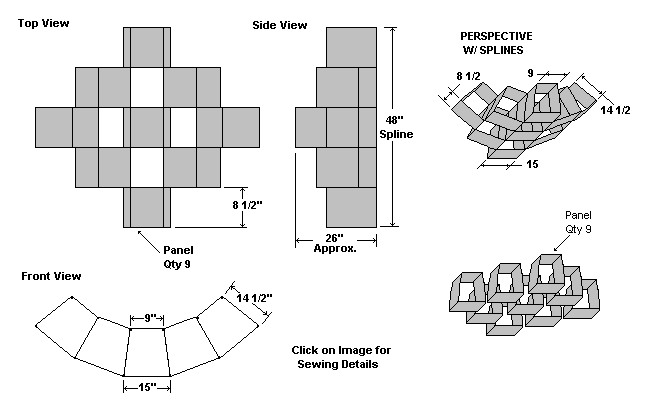
The panel sizes shown in the detailed instructions include 1/4" hem allowance for a single folding over of the edges of the fabric. If you want to double fold, add another 1/4" to your paper or paste board patterns.
All the sewing is in simple straight lines, but care should be taken to insure each box is
the same size. If not, the "X" cross braces might not fit interchangably in all locations and/or could cause the kite
to become distorted.

The detailed instructions show making the end caps by using 3/8" dia. plastic rod, cutting short lengths and drilling a short 3/16" dia. hole in one end. These end caps are epoxied onto the ends of the splines. This might seem like alot of effort and the alternative would be to use tight fitting vinyl end caps purchased from a hardware store.
The cross brace fittings shown use clear, flexible PVC tubing. Again, the alternative could be to use purchased stunt kite fittings, such as a APA Whisker Fitting or Spar Grabber. These can be ordered from the Kite Studio, 610 395-3590. My choice was using the PVC at $ .02 each, instead of the purchased fitting at $ .60 ea.
Whatever fittings and connectors you feel comfortable using is always my suggestion.
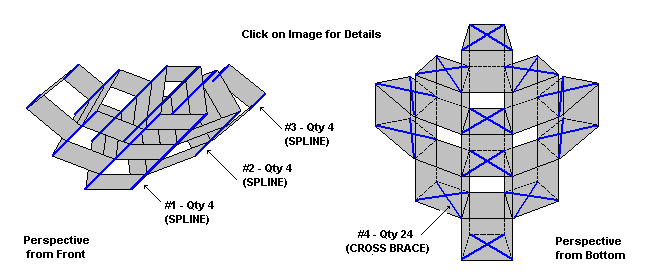
| ITEM | QTY | DESCRIPTION |
| #1 | 4 | .188" dia. x 48" lg. graphite tubing. |
| #2 | 4 | .188" dia. x 29 1/2" lg. graphite tubing. |
| #3 | 4 | .188" dia. x 10" lg. graphite tubing. |
| #4 | 24 | .125" dia. x approx. 20" lg. graphite tubing. |
Determine exact length of cross braces, #4, at time of rigging. This length can vary from kite to kite, depending upon the exact dimensions resulting when sewing the boxes. The idea is to have their length give the boxes a taught, held-open shape but not over stretch the fabric. Over stretching will cause the longitudal spars to deform.
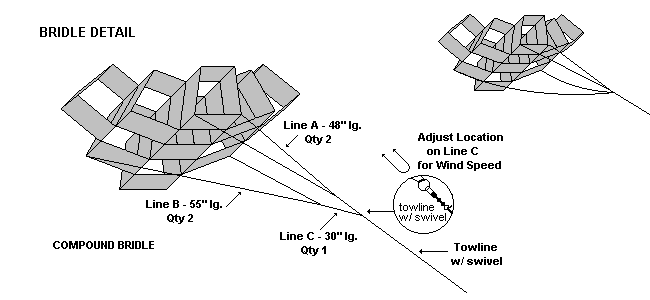

Takedown and setup requires removing or installing the 24 cross spreaders, #4. The splines, #1,#2 and #3, are kept in place, rolled up with the kite and bagged.
There are instructions for making a storage
bag with the ROK plans.
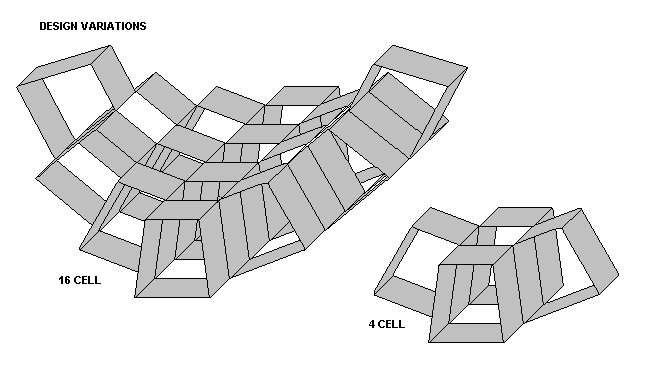
PLAN #2 - Alternate Design Details/ Comparison
Another kite maker flew this kite configuration at the 2002
Smithsonian Kite Festival. It was constructed for lighter wind flying
and I thought a construction comparison might be interesting. There is
no intent to be critical; It always goes back to personal preference.
